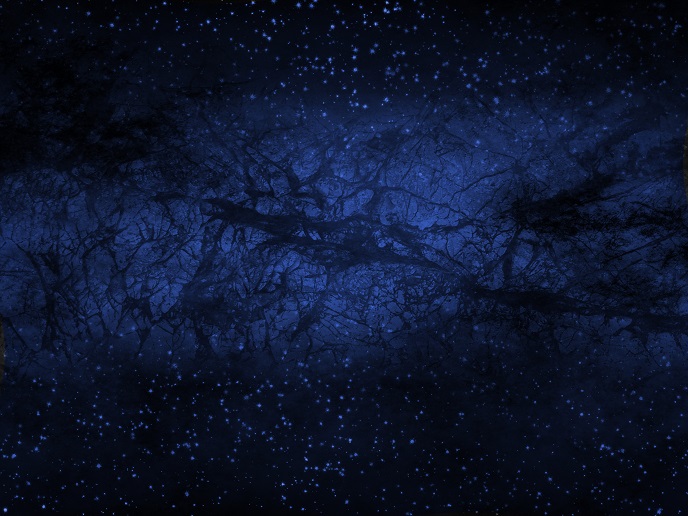Dark energy vs. modified gravity: which one will prevail?
As accurate as it has proven to be so far, general relativity is not the only theory that can account for gravitation. In fact, there are various alternative theories out there. Scientists are just not sure how these can resist observation and simulations. To close this gap, the GalaxyDance project, undertaken with the support of the Marie Skłodowska-Curie programme, has been using information encoded in peculiar velocity statistics of galaxies in the Local Universe as well as observed redshift space distortions (RSD) of distant galaxies. Dr Wojciech Hellwing, coordinator of the project and Research Fellow at the Centre for Theoretical Physics of the Polish Academy of Sciences, discusses the project’s findings so far. What makes the expansion of the Universe so difficult to comprehend? As we go deeper and further in our observations of the Universe, we are still puzzled by some of its properties. One of these is the accelerated expansion of space-time, which is presently attributed to dark energy. But the truth is, we need to consider dark energy only if Einstein’s theory of gravity is valid at all scales of the cosmos. There are other possible explanations for the accelerated expansion that do not require dark energy. These theories go beyond general relativity and are commonly called ‘modified gravity’. Testing general relativity and these alternatives at the intergalactic scale is a pressing and important issue for modern extragalactic astronomy, and it was the purpose of GalaxyDance. Can you tell us more about your approach? GalaxyDance introduces a novel approach that consists in using low-order statistics of galaxy velocities and clustering to test Einstein’s theory of gravity and its counterparts. This test covers intergalactic scales, a regime in which the theory of gravity has not been rigorously tested so far. I have demonstrated that this approach has several unique advantages: it is gravity-model independent, free of significant galaxy bias and largely unaffected by baryonic physics. I have used state-of-the-art computer simulations that recreate a virtual Universe in a supercomputer. By running and analysing these simulations, we can test beyond-GR theories and outline promising results. What makes this approach particularly innovative? The use of large supercomputer simulations was previously impossible in beyond-GR models, due to their complexity and numerical expensiveness. To mitigate this problem, we have decided to use a speed-up algorithm which – at the expense of some accuracy – can model the evolution of the Universe much more efficiently. I have successfully demonstrated that, in the case of cosmic velocities, such an approximated approach is sufficient to obtain robust results. What are the project’s most important outcomes? Undoubtedly, the new set of large, state-of-the-art simulations of alternative theories which will allow for unprecedented studies of cosmic velocity fields. We have already demonstrated that low order statistics of the galaxy velocity field should contain a strong signal of modified gravity. However, we have also shown that, to measure and extract this signal, dedicated and thorough modelling of the impact of our nearby cosmic structures, such as the Virgo galaxy cluster, will be of paramount importance for the success of our method. What do you still hope to achieve before the end of the project? We will implement additional modelling of the processes that determine galaxy colours, luminosity and shapes. This will enable the creation of artificial galaxy catalogues showing what would have been created in a Universe ruled by alternatives to Einstein’s theory of gravity. From thereon, we will compare our results with the existing and forthcoming astronomical observations to provide new stringent tests of gravity on the largest scales. What has been the feedback from the scientific community so far? Many colleagues expressed interest and even enthusiasm regarding our results when we presented them at international cosmological conferences. Furthermore, we have started new collaborations with colleagues who have complementary expertise in galaxy observations (from Lyon in France) and in the modelling of nearby cosmic structures (colleagues from Potsdam in Germany). We are very excited about these. What do you hope will be the long-term impact of the project? How does it prepare the scientific community for the era of big cosmological data? GalaxyDance will provide a new way to make cosmological tests of gravitational theories a reality. The final results, no matter which theory (dark energy or modified gravity) they favour, will have far-reaching and ground-breaking consequences for our understanding of the Universe on the largest scales. If our tests eventually provide a signature of new physics foreseen in beyond-GR theories, it will shake our current view and understanding of the large-scale evolution of the cosmos. If, on the other hand, our inquiry strengthens general relativity, it will mean that we need to look harder to explain the mystery of dark energy.
Countries
Poland



